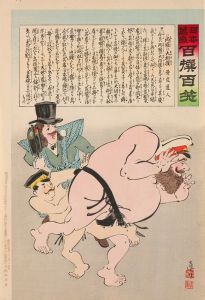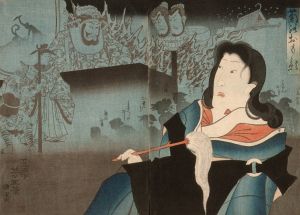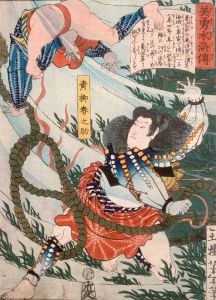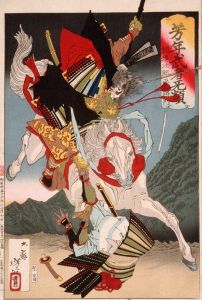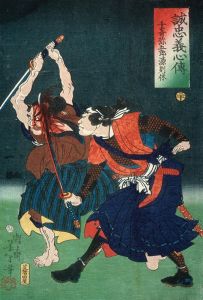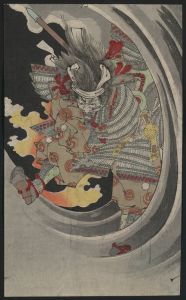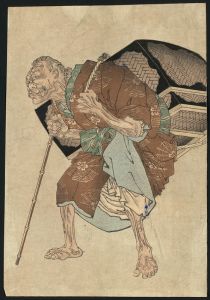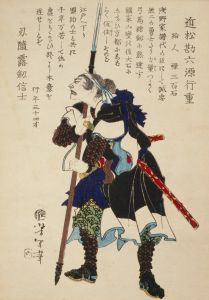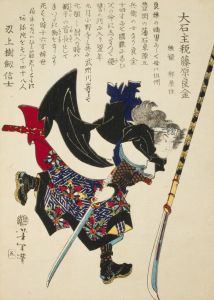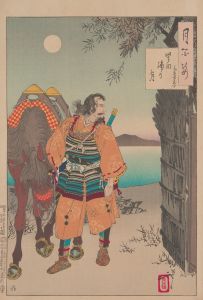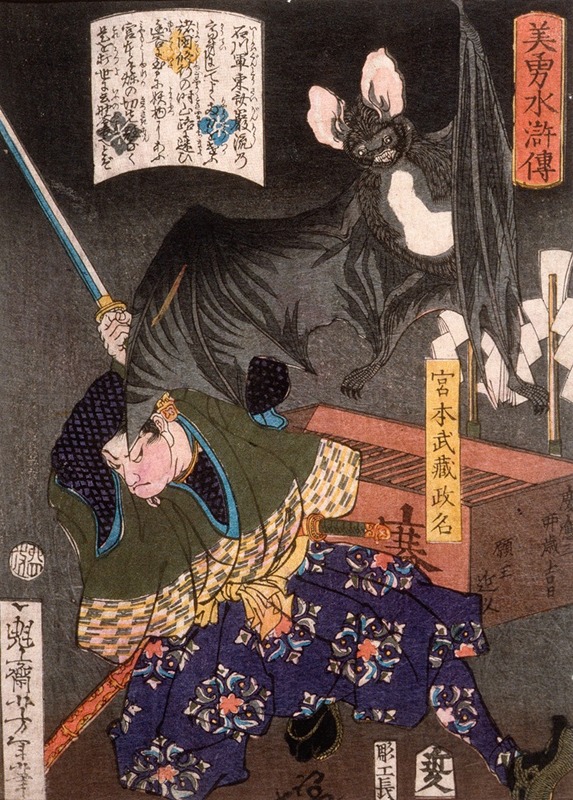
Miyamoto Musashi Slashing a Bat
A hand-painted replica of Tsukioka Yoshitoshi’s masterpiece Miyamoto Musashi Slashing a Bat, meticulously crafted by professional artists to capture the true essence of the original. Each piece is created with museum-quality canvas and rare mineral pigments, carefully painted by experienced artists with delicate brushstrokes and rich, layered colors to perfectly recreate the texture of the original artwork. Unlike machine-printed reproductions, this hand-painted version brings the painting to life, infused with the artist’s emotions and skill in every stroke. Whether for personal collection or home decoration, it instantly elevates the artistic atmosphere of any space.
"Miyamoto Musashi Slashing a Bat" is a woodblock print created by Tsukioka Yoshitoshi, a renowned Japanese artist from the late Edo and early Meiji periods. Yoshitoshi is celebrated for his innovative approach to ukiyo-e, a genre of Japanese art that flourished from the 17th to the 19th centuries. His works often depicted historical scenes, kabuki actors, beautiful women, and supernatural themes, reflecting both traditional and modern influences.
This particular print is part of Yoshitoshi's series "Tsuki Hyakushi" (One Hundred Aspects of the Moon), which was published between 1885 and 1892. The series is considered one of Yoshitoshi's masterpieces and showcases his mature style, characterized by dynamic compositions, vivid colors, and a deep exploration of human emotions and historical narratives.
"Miyamoto Musashi Slashing a Bat" portrays the legendary swordsman Miyamoto Musashi, a historical figure who lived from 1584 to 1645. Musashi is one of Japan's most famous samurai, known for his unique double-bladed swordsmanship and undefeated record in his 61 duels. He is also the author of "The Book of Five Rings," a text on kenjutsu and the martial arts in general.
In the print, Musashi is depicted in a dramatic pose, wielding his sword against a bat. The scene is set against a moonlit night, which is a recurring motif in the "Tsuki Hyakushi" series. The moon often symbolizes mystery, the passage of time, and the supernatural, adding a layer of depth to the artwork. The bat, in Japanese folklore, can represent both good fortune and the supernatural, which might suggest an allegorical interpretation of Musashi's encounter.
Yoshitoshi's depiction of Musashi is both dynamic and expressive, capturing the intensity and skill of the legendary swordsman. The use of bold lines and contrasting colors highlights the movement and tension in the scene, a testament to Yoshitoshi's mastery of the woodblock printing technique. The print not only showcases Yoshitoshi's artistic talent but also reflects his interest in historical and legendary figures, blending realism with elements of fantasy.
The "Tsuki Hyakushi" series, including "Miyamoto Musashi Slashing a Bat," was created during a time of great change in Japan, as the country was transitioning from the Edo period to the Meiji era. This period saw the modernization and Westernization of Japan, and Yoshitoshi's work is often seen as a bridge between traditional Japanese art and the new influences of the time. His prints capture the cultural and social shifts occurring in Japan, while also preserving the rich heritage of ukiyo-e.
Overall, "Miyamoto Musashi Slashing a Bat" is a significant work within Yoshitoshi's oeuvre, illustrating his ability to convey complex narratives and emotions through the medium of woodblock printing. It remains a valuable piece for understanding both the historical context of its creation and the enduring legacy of Miyamoto Musashi in Japanese culture.






